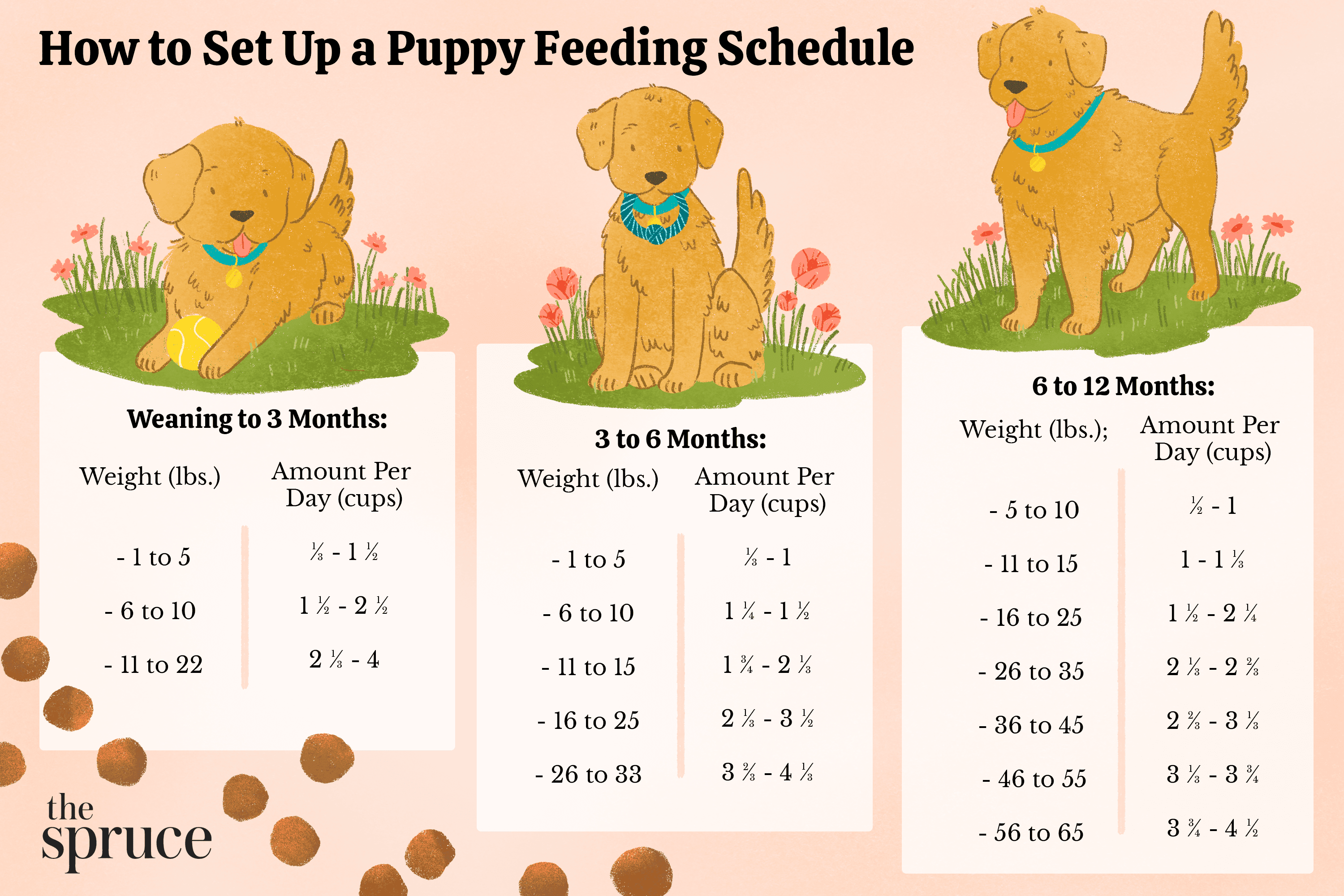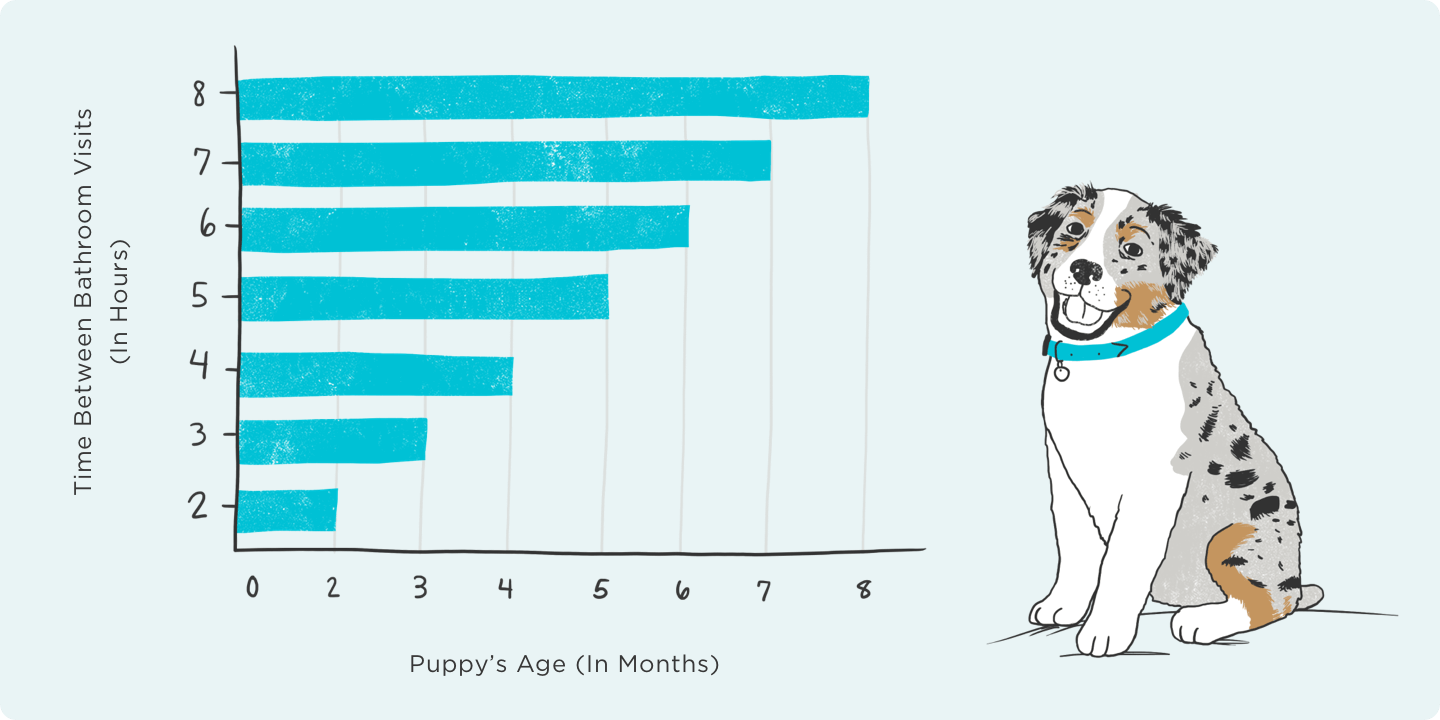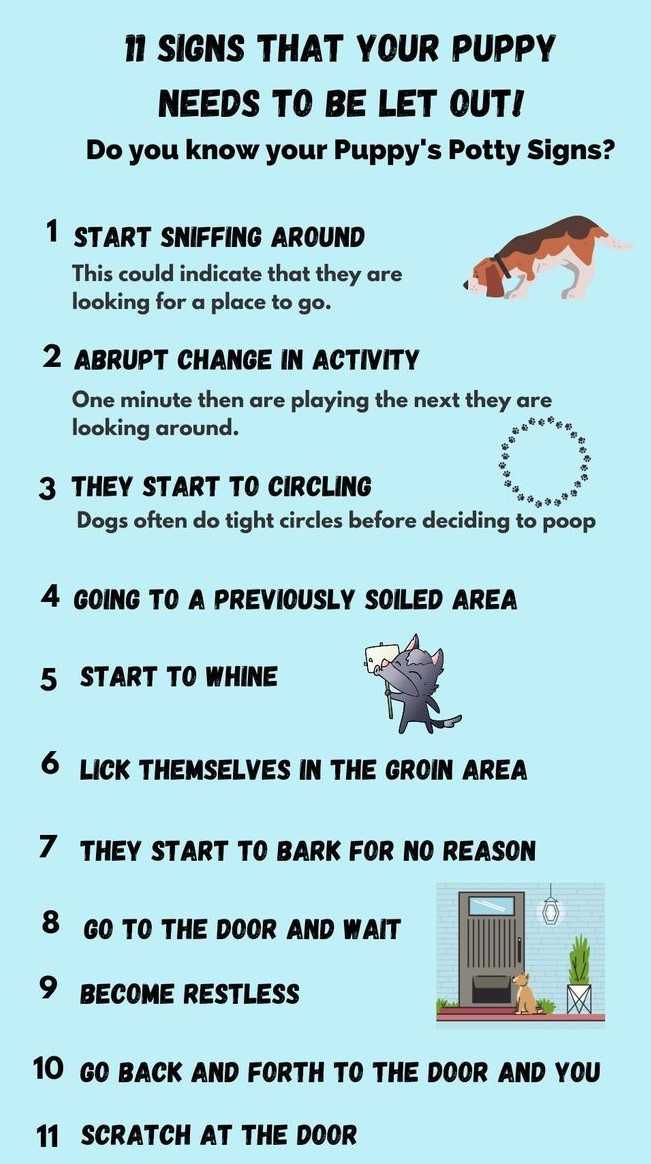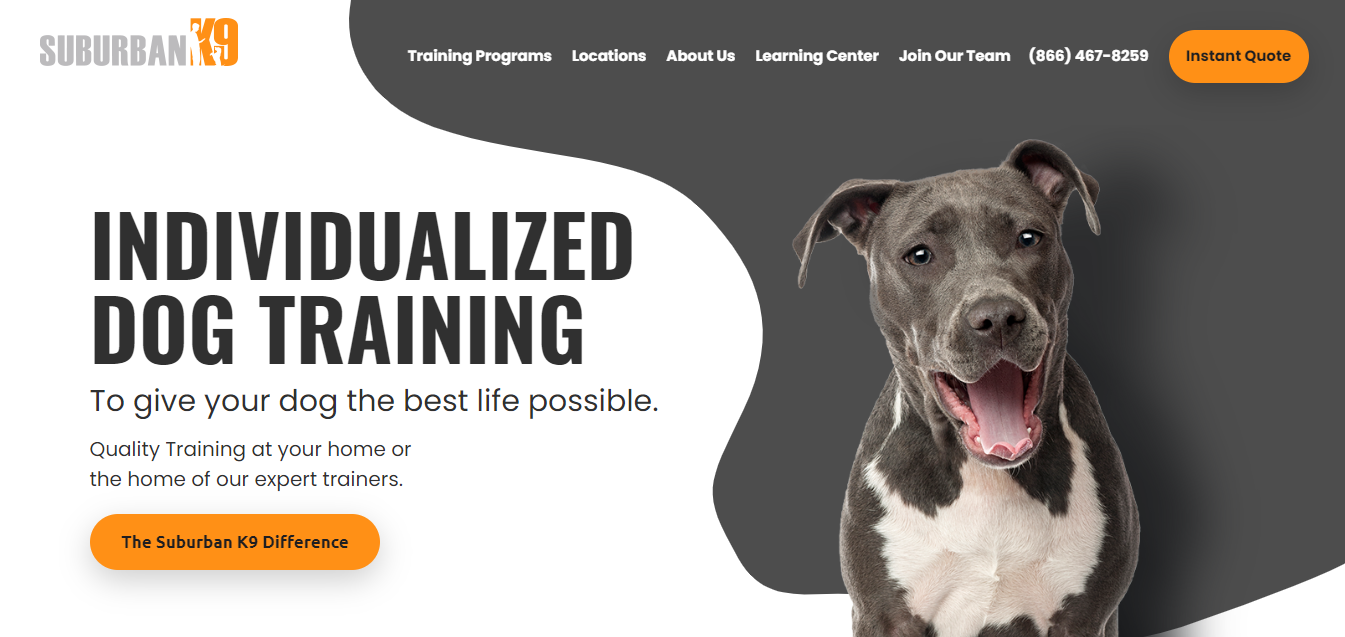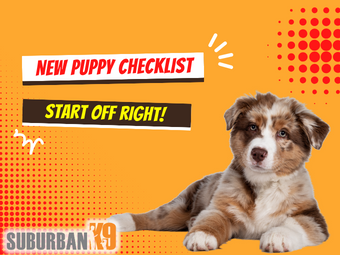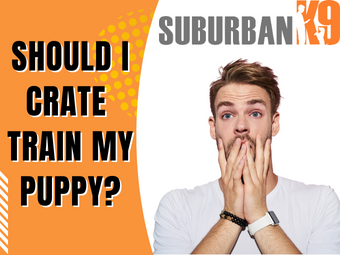Potty training is the unavoidable rollercoaster ride you signed up for when you got a puppy. The smart move is to buckle up, hold on tight, and get it over with pronto – whether you're team crate or team no crate. While potty training via crate is great, how to potty train a puppy without a crate isn't impossible either.
We can count a hundred and one reasons why people want to opt for crate-free potty training. Some may be valid and some not so much. The silver lining here is that potty training a puppy without a crate is totally doable. You just have to have the right set of instructions to guide you through frustration-free.
Keeping this in mind, we have compiled our article for any dog owner who prefers potty training their pup without a crate. You will find 9 proven strategies to help you make it happen. By the time you finish reading, you can look forward to a more harmonious mess-free future with your pup.
9 Proven Strategies To Potty Train A Puppy Without A Crate
Before we begin, it is important to know what lies ahead so you’ll know what you’ll be getting yourself into. While potty training your puppy, crate training gives you the advantage of not supervising your puppy 100% of the time.
This is mainly because puppies don't soil their place of sleeping – natural instinct! So when you pop them inside the crate, you get to have a few hours of rest. If you choose otherwise, prepare yourself for more dedication as you have to be constantly on the lookout.
That said, potty training a puppy without a crate is still very much doable. The journey can be a little rough but who said puppy parenthood was a walk in the park? So here’s to a journey that requires more commitment but yields desired results.
1. Prepare Your Home
First things first, you'll want to puppy-proof your living space. There is a ton that you can do here and many people don't even think about getting their home ready before they bring their pup home. If you are reading this article you have the advantage that you can prepare your home for the arrival of your new dog. We know it might seem like we are throwing out a bunch of products to buy, but these can really improve your quality of life with your new pup!
Clean up Risky Hazards For Your Pup
Puppies are curious little creatures and they love to chew on anything they can find. So keep your shoes, wires, and any other potential hazards out of their reach. Hide those slippers; Fido might think they make an excellent chew toy.

- ⚡ Cables can be a MAJOR RISK TO YOUR NEW PUP
- KEEP CABLES ORGANIZED using this great wood look box
- Perfect to fit cable surge protectors, so they don't look like an enticing chew toy for your new puppy
- DURABLE & STURDY BUILD: made using impact-resistant, fire retardant, and scratch-resistant materials
- ⚡ VENTILATED & PUP FRIENDLY

- We know PUPPIES LOVE TO CHEW SHOES.
- Keep Chaos at Bay, by putting your shoes away with these great shoe storage bins.
- Great Substitute for Shoe Rack: Compared with shoe rack,our design makes your shoes organization neater and tider.
- It's also harder for your pup to get into these closed bins.

- Chemicals and cleaners pose a major hazard to a young puppy. INJESTING THEM CAN BE FATAL AT THIS YOUNG AGE.
- Make sure all chemicals and cleaners are put away.
- We know that storage space can be at a premium, especially with all the new dog stuff you are buying.
- That's why we recommend these great in cabinet and under sink organizer drawers.
- Fit more stuff in your cabinets and out of reach from your pup!
Decide
Get rid of the potential potty spots in your home – the ones that might tempt your puppy to do their business where they shouldn't. Do a little detective work. Puppies have their favorite spots. If your puppy had an accident in a specific room, keep them away from that area for a while.
- Use a gate to protect areas of your home that might be hazardous or allow your pup to have an unseen accident.
- It is perfect to block off whole rooms or stairs leading your pup to your entire upstairs.
- This large 30.5 Inch height & 29.7-46 Inch black gate fits most doors!
- Simple pressure mounting is easy install.
- Protect your home from unwanted potty training mistakes!
Grab some good enzymatic cleaner. Even if you can't smell it, your puppy's super-duper nose can pick up on those lingering scents and that might signal a "potty spot" to them. The enzymatic cleaner will neutralize those odors, leaving no trace behind – not even a hint for your pup.
- Discourages re-soiling by removing the odor of the toughest dog messes
- For use on carpets, hard floors, furniture, fabrics & more
- Safe for pets & home
- Enzymes target severe dog messes
- Works to eliminate severe stains and odors
If there are any rugs or mats that you can temporarily remove, do it. Puppies sometimes mistake these soft and cozy surfaces for acceptable potty spots. If you have a carpeted area, lay down some puppy pads initially. Even though we don’t support using a potty pad, many dog owners prefer them as a safety net to protect their carpets while their puppies are still in the initial phases of house training.
Some pups might see indoor plants as a fancy spot to go potty, just like a miniature tree in the great outdoors. So keep an eye on your greenery and, if necessary, relocate any plants that might be too alluring to your puppy's potty instincts. Consider investing in some baby gates and use them to block off any areas where you don't want your puppy to roam freely.
2. Establish A Consistent Feeding Schedule
Consistency is key when it comes to dog training and feeding time is no exception. So pick a time for breakfast, lunch, and dinner that works for you and your furry friend, and stick to it like glue. Make sure to feed puppies at least 3 meals a day since they need to eat more frequently as compared to an adult dog.
Now remember it is very important to feed your puppy the right amount of food based on their age, size, and breed. Overfeeding upsets the tummy and interferes with their potty training progress. So check with your vet and follow their recommendations for the right portion size. Keep track of your puppy's feeding schedule. Knowing when they've eaten can help you predict when they'll need to go potty.
3. Schedule Regular Potty Breaks
The thing is, when you first bring a puppy home, they're like potty pioneers. They haven't quite grasped the whole "hold it in" concept yet. For them, peeing and pooping whenever the mood strikes is the way to go. Plus, they have small bladders and nature calls more frequently. So as a responsible puppy parent, you need to be on top of their potty needs. Set up a potty schedule and stick to it.
A good rule of thumb is to take your puppy out for a potty break first thing in the morning, after meals, and before bedtime. Toss in a few extra potty breaks throughout the day to keep things shipshape.
Young puppies can hold their bladder for approximately the same number of hours as their age in months. So if you've got a 3-month-old pup, they might need a potty break about every 3 hours. Now if you're starting potty training with an even younger puppy, get ready for some more frequent outings. You’ll be doing a potty parade every 30 minutes or so.
4. Watch For Signs
Our puppies might not speak our language but they have a whole dictionary of signs they use to communicate. Keep an eye out for any unusual behavior – like sniffing around like a little detective or doing the "potty dance" with excitement. Here are the most common cues that your puppy will give you:
- Pawing at the door
- Whining or whimpering
- Restlessness or pacing
- Circling or sniffing the floor
- Sniffing the ground intensely
- Barking or scratching at the door
- Turning in circles before squatting
- Suddenly stopping play or other activities
- Standing or sitting near the designated potty area
If you sense your puppy is about to do their business indoors, don't hesitate to intervene. Give your hands a good clap and follow it up with a firm 'no.' This will help them understand that the inside is not where they should be doing their potty business.
Get your adorable pup all leashed up and head out to their favorite potty spot. Being quick with your response can help your furry friend associate that call of nature with their designated spot in no time.
5. Taking Them Outdoors
When you take your puppy outside, always use a leash. It'll keep them focused and ensure they head straight to their designated potty spot. Find that perfect potty spot. Look for an area that's easily accessible and away from any busy foot traffic. We recommend a nice grassy spot for a potty mission. But if you can't find one, gravel can work, though most dogs aren't too keen on going potty there.
Take your puppy to the same spot every time. Be patient and give them some time to sniff around. Give them a maximum of 5 minutes to get down to business. If your pup doesn't do their thing within those 5 minutes, it's all good. Just take them back inside and repeat the drill every 15 minutes until you get those desired results.
Here's our pro advice – choose a potty command. Pick a simple word or phrase like "go potty" and use it consistently during an outdoor potty time so they associate the command with the action. Be prepared for any weather surprises. Whether it's rain or shine, your house-trained puppy needs their potty breaks. A little umbrella or some sunscreen won't hurt either.
You can also use potty bells to help potty train your dog. These bells are hung by the door within your puppy's reach to let you know they need to go potty. Here's how it works: every time you're about to take them outside for a potty break, give the bells a little jingle with your dog’s nose or paw.
- Smart Potty Training: A must have puppy Supplies at home, easily and more effectively training your dogs!
- Super Durability: Made from heavy duty nylon material, durable & chew resistant.
- Adjustable Length: Its ergonomic design allows for easily adjusting the length between 12" and 15" from the ground.
- Super Easy Training: Join the many who have achieved success from the dog bell for door potty training.
Use them every time you take your puppy out for a potty break. Soon, your furry friend will associate the bells with going potty outside and they’ll use them to tell you when they need to eliminate.
You can also use potty scents that are specially designed to attract your puppy to their designated potty spot – a welcome mat for your puppy's potty area. Sprinkle a little in your puppy's potty spot outside and it will work like a magnet. We usually don't go for sprays to help with potty training but there's nothing wrong with giving them a try if it suits your routine.
- DOG TRAINING SPRAY: potty training spray for dogs makes house breaking easy; specially formulated to encourage your furry friend to eliminate where you want them to, reducing accidents and speeding up the training process
- HOUSE TRAIN WITH EASE: Shorten house training time for dogs of all ages with our easy-to-use dog spray for potty training; whether you're training a puppy or trying to break old habits, our puppy potty training spray will make the process a breeze
- SAFELY USE ANYWHERE: safe to use indoors and outdoors around children; made with natural ingredients, dog pee spray is free from harmful chemicals and toxins, making it safe for use around the whole family
- CONVENIENT: This dog potty training spray is both convenient and effective; with its easy-to-use spray nozzle, it applies quickly to any surface; whether you're training your pup outside or on an indoor pad.
- MADE IN USA: house breaking potty training spray is proudly made in the USA, ensuring the highest quality and safety standards; your furry friend will have the best potty training experience possible
Some people use potty pads for training but we think that it will make housebreaking a bit tougher in the long run. When you introduce pee pads, your puppy might start thinking that they've found their permanent potty spot indoors. We believe that it's better to focus on teaching your pup to do their business outside from the get-go.
6. Nighttime Potty Training
To set your pup up for a successful night, limit their access to water about 2 hours before bedtime. It will prepare them for a solid night of sleep without the need for midnight potty breaks. Take your dog out for a final potty break right before you hit the bed. It will give them one last chance to empty their bladder before snuggling up for the night.
When you're getting your furball used to sleeping through the night, set up their bed right in your bedroom. This way, your little buddy feels secure and close to you and you can also keep an eye on them. As the days go by, gradually start moving the bed a bit farther away each night. This slow transition helps your pup get accustomed to being independent while knowing you're still nearby.
During the first few weeks, set up a little alarm clock to remind you of the potty break in the middle of the night. Initially, take them out every 2 hours during the night. As your puppy grows and becomes a potty pro, you can adjust the timing. Aim for around 6 hours after their last potty break. However, it actually varies a lot based on how old your dog is and their unique personality.
If you have 2 people handling puppy duties, here's a neat trick: try mixing up your sleep schedules a bit. One of you can hit the hay early while the other stays up a tad later. That way, you can take turns taking the pup out every 2 hours and still catch a good 6-7 hours of shut-eye each.
Keep an ear out for any midnight signals. If your pup starts stirring or whining in the middle of the night, it's your cue to take them out. During nighttime potty training, keep things low-key and boring. It will be business first and then right back to bed. Avoid playtime or any exciting interactions that might distract them from the main mission – going potty.
Take things slow and steady. Start by adding 15 minutes each night to the time between potty breaks until you reach a 7 to 8-hour gap. As your pup gets older, bladder control will naturally get better.
7. Handle Accidents Gracefully
Accidents happen – even with the best of intentions and a potty-trained pup. As pet owners, it's important to handle those little mishaps with grace and understanding. Stay calm and remember that it's all part of the learning process.
When you catch your pup in the act, it's an opportunity for redirection. Say a simple, "No" and quickly take them to their designated potty spot outside. If you catch them in the act and give corrections, it will actually help them pick up the learning faster.
However, if you see that there's already been a potty accident, go ahead and help them fix it. But don't scold or punish your pup. They won't understand the connection between the accident and your frustration. Instead, they might think you're upset with them going potty which can cause confusion and anxiety.
Be proactive in preventing future accidents. Keep a close eye on your puppy, especially during those early stages of potty training. If you notice them showing signs of needing to go potty, scoop them up and head outside. As we mentioned earlier, use an enzymatic cleaner to eliminate any lingering odors. Your pup won't be tempted to revisit the scene of the accident.
8. Aim For Gradual Independence
As your little puppy gets the hang of potty training, you'll notice improvements along the way. Keep an eye on their potty habits – are accidents becoming less frequent? Do they consistently go to their designated potty spot outside?
When your puppy progresses in their potty training journey, they're ready for a bit more freedom. Start by gradually increasing the time they can spend unsupervised. Let them explore the house while you keep a watchful eye from a distance. Start with short periods of unsupervised time and gradually increase it. If they do well, hooray! If there are a few accidents, no worries. It's all part of the learning process.
Don't forget the power of routine. Stick to a consistent potty schedule even during unsupervised time. This helps your pup know when it's time to take a potty break and keeps them on the right track. When your pup successfully goes potty outside, praise and pet them.
9. Get Help From The Experts
Things can be overwhelming for your puppy when they leave the cozy comfort of their dog mom and siblings. They suddenly find themselves in a whole new home and lots of unfamiliar surroundings which can be a rollercoaster of emotions for them.
As a new dog owner, you want to give them the best start in life and that includes nailing the potty training game. But despite your best efforts, things might not always go as planned. There could be lots of underlying factors affecting your puppy's potty training progress. They might be feeling anxious about the new environment, struggling to adjust to their new routine, or simply taking some time to figure out this whole potty business.
Suburban K9 is your go-to expert for effective potty training for your puppy. With over 17 years of experience, we have become the best in the business. Our team comprises 42 highly skilled professional trainers, all with a passion for understanding and nurturing puppy behavior like no other.
Our approach is centered around personalized and private in-home lessons which ensures that we tailor our training methods to suit the unique needs of your puppy.
At Suburban K9, we use a balanced training method that teaches your puppy to behave in the right way, without solely relying on positive reinforcement. We understand that potty accidents can be frustrating but our training instills in your pup the understanding that obedience is not selective. They learn to respect you as their leader and willingly follow your commands.
That said, we steer away from inhumane techniques. Our gentle nudges in the right direction help your dog learn and adapt without causing any harm or stress. With our guidance, your puppy will master the art of potty training, making your home a cleaner and more pleasant space for both of you.
Conclusion
Can puppies be potty trained without a crate?
This house training course should've already answered the question of if your dog can be trained without the use of a crate. It also should help you understanding that potty training with a crate is a faster and easier method. If you are looking for additional help with house breaking and potty training your puppy, check out our Potty Training Academy. This potty training course goes over everything you could ever want to know about potty training a pup.
How to potty train a puppy without a crate is a very tactical process especially since these little ones get separated from their mothers at a very crucial stage. But it is not impossible. Simply follow the expert tactics and you’ll achieve great results for crate-free potty training.
Also, remember it takes a lot of patience and commitment from your side to help conquer the piddling accidents and create a harmonious environment for both you and your puppy. Just set your mind to the goal and all we can say is you got this.
At Suburban K9, we offer professional help for training your puppy – be it potty training, obedience training, or anything other training. Our proactive training is based on understanding the unique behavior of your puppy through a one-on-one approach. We bring the training right to your doorstep! That's right – our in-home training sessions are like having a puppy boot camp right in the comfort of your own home.
Curious to know more? Book a consultation now and we'll walk you through all the details.
The article above contains Affiliate Links from Amazon and other companies. If you visit their site and buy the product, we will get a small commission. Please know that we only recommend products we truly love and would never recommend a product we don't think is incredible. We look at and try hundreds of products before we ever recommend them to our clients!


